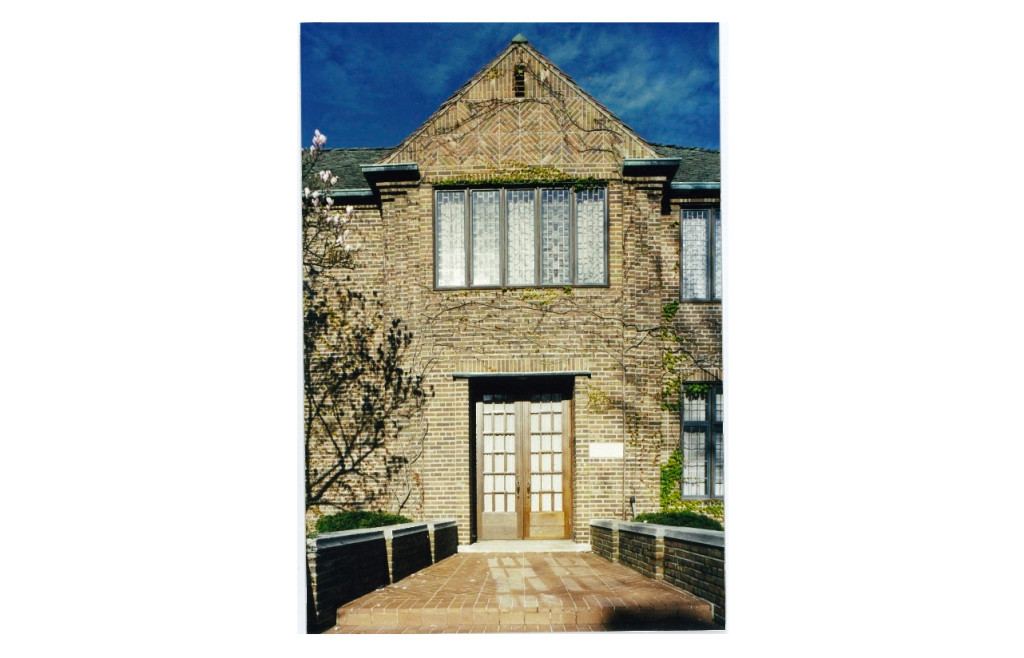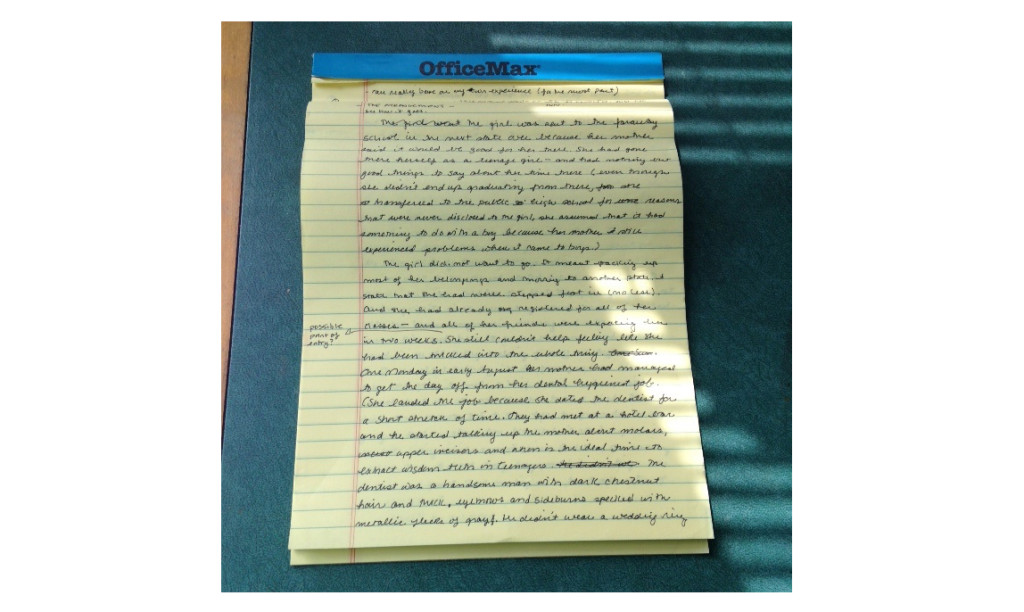\
THE MATERIAL
S. Kirk Walsh
-
 Photo courtesy of David Dunlap.
Photo courtesy of David Dunlap.The very beginning of this story was inspired by the private school Kingswood School Cranbrook in Bloomfield Hills, Michigan, which I attended from seventh to twelfth grades. A few weeks before the first day of school, my mom forced me to enroll at Kingswood even though I had already signed up for classes at the nearby public middle school. It made for one of the more jarring transitions of my adolescence, because the girls at Kingswood had much different agendas than I did. They wore Sassoon, Gloria Vanderbilt, and Clinique makeup. I was a tomboy who knew little about fashion or makeup or necking in the basement. But after about two years, I started to make some close friends, and my high school years turned out to be some of the better years of my early life. I wasn’t a very good student, but it was a gift to attend a school campus designed by Eliel Saarinen. I was an athlete and spent many afternoons running along the trails that threaded the wooded hillsides and through fountains and lawns dotted with sculptures by Mark di Suvero, Henry Moore, Carl Milles, and others. By the time I graduated from Kingswood, I understood that I had been given a remarkable experience.
-

The mating twist and heart of the story came along about five years ago: a friend made a joke about mating being the cost of tuition to a fancy boarding school, and this idea seemed to provide an inventive overlay to my experience of being forced to attend Kingswood. The mating theme also allowed me to access some of my later life experiences of not being able to become pregnant while witnessing my friends give birth at a steady clip. Every month, it seemed, someone was announcing their pregnancy, while my husband and I went through IVF treatments with no diagnosis or success. After back-to-back years of failed attempts and going through the related grief, my husband and I eventually made the decision not to become parents (through egg donor or adoption).
It was a moment of empowerment, but it also felt like we were stepping outside the margins of what was expected of us, that we were refusing the inherent currency that seems to advance couples into adulthood—the dependence and care of other small human beings. Indeed, richness in life and marriage can be found in many other places, but it took me a while to see this. “New School” allowed me to take some of these painful feelings and transport them into a surreal environment, and the material developed a tone shaded with a degree of whimsy and levity. The first draft of the story was written during a two-week residency at VCCA. At the time, I was trying to get started on a novel, but my attention was pulled toward this story.
-

Soon after my husband and I decided not to have children, I started to seek out new role models—women who were not mothers and still live full and enriching lives. This search gave me the surfing poet aunt on the other coast in “New School”—she’s inspired by some of the women without children who now inspire me: Margot Livesey, Ann Patchett, Mavis Staples, and Eileen Myles. Eileen was also a resident at VCCA when I was writing the first draft of this story; she was working on a memoir about her pit bull, Rosie. I loved that she was writing about her dog, because sometimes I feel like as a childless middle-age woman with a strong love for cats that I might be relegated into the growing-old-crazy-cat-lady stereotype. Eileen certainly subverts that, and her honesty in her prose and passion for life is vibrant and magnetic. Like Isabelle, it took me a little while before I started to embrace childless women as role models. For a while, it felt like everyone was a mother.
-

I knew from the first draft that I was going to circle back to Detroit and the women singing. The bookstore in “New School” is modeled after John King Books on W. Lafayette Blvd in Detroit. It’s the largest secondhand bookstore in Michigan and is housed in a former glove factory. During one visit, I found a first edition of Julie Hayden’s story collection, The Lists of the Past, which I ended up writing an essay about; her collection was later reissued by Pharos Editions (thanks to Cheryl Strayed).
During recent years, my mom has been sick on and off with debilitating depression and anxiety, and I have made several trips to Michigan to care for her. During one trip, my mom had been recently discharged from the hospital after rounds of ECT treatments, and my stepmom had just lost her forty-one-year-old daughter to a long fight with cancer. I was doing my best to do what I could for both my mom and stepmom, but I was somewhat disoriented and unhinged by my mom’s condition and my stepmom’s tragic loss. One afternoon, I stepped into the local bookstore and studied the spines of the fiction shelves: there were my friends’ books, there were books that I had reviewed for different newspapers, there were books that I loved. It was like the shelves started to sing to me, “It’s going to be OK! Remember, you have us!” Now I make sure that I pay to a visit to a bookstore when I’m in Michigan. They always make me feel better.
-

I was born in Detroit and raised in various suburbs just outside the city. It is a place that I find I always return to in my fiction and nonfiction, even though I haven’t lived there since I was twenty-one. The scars of the city are evident on almost every street and corner. The countless abandoned historic buildings, churches, and homes are haunting and beautiful at once. It’s sad, but the city is doing its best to redefine—and re-energize—itself. During a recent visit, I noticed a new and authentic vibrancy in the streets that bordered Eastern Market and downtown.
-

This story went through about five revisions. Two of my writer friends—Betsy Crane and Karen Olsson—read drafts and provided helpful feedback. I cut about a thousand words for my submission to Covered with Fur, and then Callie Collins skillfully guided me in the final revision. During the past three years, I revisited this story in breaks between drafts of a historical novel that takes place in Belfast, Northern Ireland during World War II. Needless to say, the writing in my novel is quite different from this story. I like having the chance to experiment with voice and style in short fiction; working on my longer project requires a consistent point of view and precise attention to a historical time period. I love the fiction of David Means and Donald Antrim; their work often inspires me to venture into my stranger ideas and see if I can come up with a narrative shape or container for them. (I’m currently working on another story about a young woman who attends Amnesia Anonymous.) I love how both Means and Antrim are able to write so honestly about real life without always writing about “real life.”



